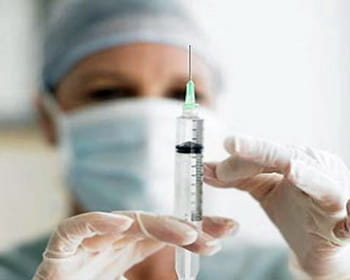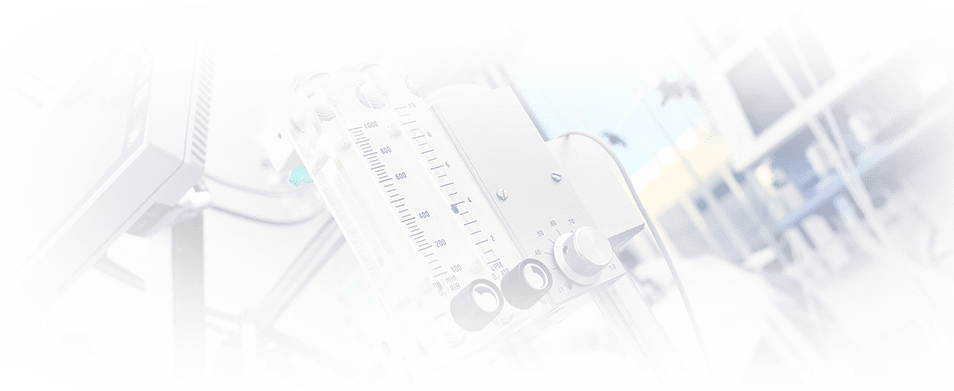Rabies

Physician-therapist, somnologist
Novikov Maxim
Experience 13 year
Doctor of the highest category. Member of the European Respiratory Society and the Russian Respiratory Society
Contact with an aggressive wild or domestic animal poses a risk of rabies infection. This extremely dangerous disease is caused by the Rabies virus, which affects cells of the human nervous system and brain. In the active phase, it progresses rapidly and with severe symptoms, and the likelihood of death is almost 100% if no preventive measures are taken.
General information about its pathogen
Wild and stray animals, mainly carnivores, some rodent species, but also horses and domestic animals serve as hosts for this virus. The main means of transmission of the virus is animal saliva, and the method of infection is the bite of a human by an animal. Infection does not develop in every case. When a limb is bitten, the risk of developing the disease is about 23%, and in the case of injuries of the neck or face it reaches 90%.
By entering the human body, this virus spreads along nerve fibres and can also be spread through the blood and lymph stream. It destroys nerve cells and in their place leaves specific formations called Babes-Negri bodies. After a while, the virus reaches the brain, where it causes an inflammatory process characterised by severe symptoms. Damage to nerve fibre cells causes functional disorders of internal organs and systems.
The virus has a poor survival rate in the outdoor environment. It dies instantly in direct sunlight and when dried and it dies within ten minutes when heated to 60°C. Stomach acid destroys it within 20 minutes, alcohol and other disinfectants almost instantly. At low temperatures, the virus can persist for several weeks, but it loses its virulence.
External symptoms of the disease
The incubation period for rabies infection can range from 1.5 weeks to 3 months, depending on the location of the bite and the depth of penetration of the saliva of the infected animal. With multiple bites to the head and neck, the disease develops quickly. With a single injury to the leg, as a rule, signs of rabies appear in a person 2-3 months later.
 The following periods can be clearly seen in the development of the disease:
The following periods can be clearly seen in the development of the disease:
- the incubation period, during which rabies symptoms are absent;
- the prodromal period, characterised by a slight increase in temperature, sleep disturbances, depressed or restless behaviour and an itching feeling in the bite area;
- the aggressive period characterised by hypersensitivity to external irritants, waterboarding, delirium and inadequate behaviour;
- the paralytic period, with a sagging lower jaw, unnatural appetite and personality degradation.
Then comes paralysis of the respiratory tract, ending, as a rule, with the death of the patient.
In some cases, patients do not have the prodromal stage and sometimes the first symptoms of rabies in humans appear with the development of paralysis. As a result, doctors are not able to detect the disease in time and to provide the necessary assistance. You should immediately consult a doctor if you are bitten by an animal. Delay can lead to irreversible consequences.
Diagnostic methods
If the patient goes to the doctor immediately after coming into contact with an aggressive animal, an external inspection of the bite site is of great importance. The doctor determines the characteristic features of the wounds, the depth of tissue penetration by the animal's teeth and assesses the degree of salivation. All this is necessary to determine the estimated length of the incubation period.
During further observation, the doctor notes the presence of visual signs of rabies - changes in behaviour, size of the pupils, etc. Laboratory diagnostics are not performed in regular clinics, since almost all tests are specific and can only be performed in laboratories that investigate dangerous infections. The lifetime examinations are usually useless, as the results come too late. At present time, doctors can:
- detect viral antigens in a skin biopsy of the occipital area using the fluorescent antibody method;
- detect the presence of antibodies to the virus from the seventh day of illness;
- perform a PCR test of the cerebrospinal fluid.
Most often, when a person is asymptomatic and seeks medical attention too late, post-mortem examinations have to be performed to reliably establish the cause of death.:
- histological analysis of brain tissue to detect Babes-Negri bodies;
- infection of laboratory animals with saliva taken from humans and, if they die, detection of Babes-Negri bodies in the brain tissue;
- PCR and ELISA tests on tissues of the cornea and brain, as well as saliva.
The listed methods make it possible to establish rabies as the cause of the disease with one hundred percent accuracy.
Modern treatment methods
 Once symptoms are evident, effective treatment of rabies is no longer possible and the efforts of doctors are limited to reducing the patient's suffering. The patient is prescribed anticonvulsants and hypnotics, he/she is placed in a darkened room with good noise insulation and given painkillers and tranquillisers. Scientists are currently testing new techniques based on the use of specific immunoglobulins, intensive therapy and hypothermia of the brain. However, at the current level of medical science, all cases are fatal once clinical symptoms appear.
Once symptoms are evident, effective treatment of rabies is no longer possible and the efforts of doctors are limited to reducing the patient's suffering. The patient is prescribed anticonvulsants and hypnotics, he/she is placed in a darkened room with good noise insulation and given painkillers and tranquillisers. Scientists are currently testing new techniques based on the use of specific immunoglobulins, intensive therapy and hypothermia of the brain. However, at the current level of medical science, all cases are fatal once clinical symptoms appear.
In these circumstances, prevention of rabies is of vital importance, not only by vaccinating healthy people, but also through a compulsory series of measures for animal bites:
- deep and thorough washing of wounds with medical alcohol;
- treatment of wounds with antiseptic agents;
- giving a course of anti-rabies vaccination using dry anti-rabies vaccine and anti-rabies immunoglobulin.
This vaccine and immunoglobulin regimen is determined on a case-by-case basis, depending on the location of the bite, the severity of the wounds and the degree of salivation. If all of the above measures are implemented, the likelihood of illness can be reduced to zero.
FAQs
How is rabies transmitted from person to person?
It is theoretically possible to transmit the virus from one person to another by kissing if the sick person already has it in their saliva and the healthy person has wounds in his/her mouth. In practice, however, such cases are not known to medicine. Infection of a foetus from an infected mother during pregnancy is possible, as well as to donors during organ transplants, but these cases are extremely rare.
Is rabies transmitted by a cat scratch?
It is possible when:
- some skin is traumatised by the claws of an infected animal;
- some damaged skin comes into contact with some saliva of a sick animal;
- a sick animal salivates the mucous membrane of the mouth, nose or eyes of a person;
- cutting the carcass of an infected animal without special clothing and protective equipment;
- there is airborne contact in a dark, damp room (e.g., a cave that serves as a home for infected bats).
However, the vast majority of infections come from bites from sick animals.
Which animals are most often infected by rabies?
Wild foxes, wolves and jackals are the most common hosts of the virus. They infect humans directly or through contact with their domestic animals, which in turn transmit this infection to humans.




